
Keywords: albopictus

|
Molecular Evidence of Wolbachia Species in Wild-Caught Aedes albopictus and Aedes aegypti Mosquitoes in Four States of Northeast IndiaVinayagam, S. Nirmolia, T. Chetry, S. Kumar, N. P. Saini, P. Bhattacharyya, D. R. Bhowmick, I. P. Sattu, K. Patgiri, S. J., Journal of Tropical Medicine, 2023.
Wolbachia, a Gram-negative intracellular bacterium, naturally infects many arthropods, including mosquito vectors responsible for the spread of arboviral diseases such as Zika, chikungunya, and dengue fever. Certain Wolbachia strains are involved in inhibiting arbovirus ... Keywords: Aedes, aegypti, albopictus, arboviru, dengue, genetic biocontrol, microbiome, virome |
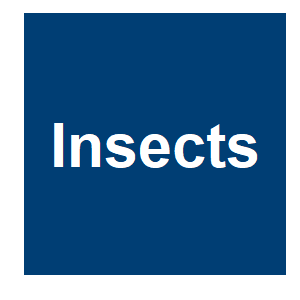
|
Suppression Trial through an Integrated Vector Management of Aedes albopictus (Skuse) Based on the Sterile Insect Technique in a Non-Isolated Area in SpainC. Tur, D. Almenar, M. Zacarés, S. Benlloch-Navarro, I. Pla and V. Dalmau, Insects, 14. 2023.
In recent years, Aedes albopictus (Skuse, 1984) has expanded its distribution globally due to its high ecological plasticity. This expansion has increased the population’s susceptibility to contracting diseases such as dengue, Zika, and chikungunya, among others, which are ... Keywords: Aedes, aegypti, albopictus, arboviru, dengue, genetic biocontrol, microbiome, virome |
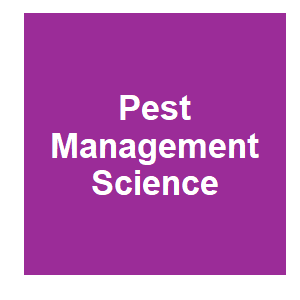
|
Effects of radiation on the fitness, sterility and arbovirus susceptibility of a Wolbachia-free Aedes albopictus strain for use in the Sterile Insect TechniqueD. J. Zhang, S. Yan, H. Yamada, Y. Wu, G. Wang, Q. D. Feng, D. Paerhande, H. Maiga, J. Bouyer, J. Qian, Z. D. Wu and X. Y. Zheng, Pest Management Science, 2023.
BACKGROUND: The sterile insect technique (SIT) is a green and species-specific insect pest control technique that suppresses target populations by releasing factory-reared, radio-sterilized males into the wild. Once released, it is important to be able to distinguish the released ... Keywords: Aedes, aegypti, albopictus, arboviru, dengue, genetic biocontrol, microbiome, virome |

|
Spatial Distribution and Long-Term Persistence of Wolbachia-Infected Aedes aegypti in the Mentari Court, MalaysiaY. L. Cheong, W. A. Nazni, H. L. Lee, A. NoorAfizah, I. C. MohdKhairuddin, G. M. R. Kamarul, N. M. N. Nizam, M. A. K. Arif, Z. M. NurZatilAqmar, S. M. Irwan, K. Khadijah, Y. M. Paid, O. Topek, A. H. Hasnor, R. AbuBakar, B. Singh Gill, K. Fadzilah, A. Tahi, Insects, 14. 2023.
Dengue is endemic in Malaysia, and vector control strategies are vital to reduce dengue transmission. The Wolbachia strain wAlbB carried by both sexes of Ae. aegypti was released in Mentari Court, a high-rise residential site, in October 2017 and stopped after 20 weeks. Wolbachia ... Keywords: Aedes, aegypti, albopictus, arboviru, dengue, genetic biocontrol, microbiome, virome |

|
A bacterium against the tiger: further evidence of the potential of non-inundative releases of males with manipulated Wolbachia infection in reducing fertility of Aedes albopictus field populations in ItalyB. Caputo, R. Moretti, C. Virgillito, M. Manica, E. Lampazzi, G. Lombardi, P. Serini, V. Pichler, N. W. Beebe, A. Della Torre and M. Calvitti, Pest Management Science, 2023.
BACKGROUND: Incompatible Insect Technique (IIT) is a population suppression approach based on the release of males with manipulated Wolbachia infection inducing egg inviability in wild females. We here present results of multiple field releases of incompatible ARwP males carried ... Keywords: Aedes, aegypti, albopictus, arboviru, dengue, genetic biocontrol, microbiome, virome |

|
Wolbachia pipientis infections in populations of Aedes albopictus in the city of València (Spain): implications for mosquito controlR. Bueno-Marí, R. Domínguez-Santos, M. Trelis, E. Garrote-Sánchez, M. Cholvi, F. Quero de Lera, M. Khoubbane, A. Marcilla and R. Gi, Revista Española de Salud Pública, 97. 2023.
OBJECTIVE: The presence of Aedes albopictus, of high sanitary and social impact, was first reported in Valencia (Eastern Spain) in 2015. Innovative tools for its control include the use of the endosymbiotic bacterium Wolbachia pipientis. The release of mosquito males infected ... Keywords: Aedes, aegypti, albopictus, arboviru, dengue, genetic biocontrol, microbiome, virome |

|
The suppressive potential of a gene drive in populations of invasive social wasps is currently limitedA. B. Meiborg, N. R. Faber, B. A. Taylor, B. A. Harpur and G. Gorjanc, Scientific Reports, 13:1640. 2023.
Social insects are very successful invasive species, and the continued increase of global trade and transportation has exacerbated this problem. The yellow-legged hornet, Vespa velutina nigrithorax (henceforth Asian hornet), is drastically expanding its range in Western Europe. ... Keywords: Aedes, aegypti, albopictus, arboviru, dengue, genetic biocontrol, microbiome, virome |

|
Control of Aedes mosquito populations using recombinant microalgae expressing short hairpin RNAs and their effect on planktonX. Fei, S. Xiao, X. Huang, Z. Li, X. Li, C. He, Y. Li, X. Zhang and X. Deng, PLOS Neglected Tropical Diseases, 17:e0011109. 2023.
New biocontrol strategies are urgently needed to combat vector-borne infectious diseases. This study presents a low-cost method to produce a potential mosquito insecticide that utilizes the microalgae released into suburban water sources to control mosquito populations. Chlorella ... Keywords: Aedes, aegypti, albopictus, arboviru, dengue, genetic biocontrol, microbiome, virome |

|
Sterility of Aedes albopictus by X-ray Irradiation as an Alternative to γ-ray Irradiation for the Sterile Insect TechniqueL.-M. Wang, N. Li, C.-P. Ren, Z.-Y. Peng, H.-Z. Lu, D. Li, X.-Y. Wu, Z.-X. Zhou, J.-Y. Deng, Z.-H. Zheng, R.-Q. Wang, Y.-N. Du, D.-Q. Wang and S.-Q. Deng, Pathogens, 12. 2023.
The mosquito Aedes albopictus can transmit various arboviral diseases, posing a severe threat to human health. As an environmentally friendly method, sterile insect technology (SIT) is considered an alternative to traditional methods such as chemical pesticides to control Ae. ... Keywords: Aedes, aegypti, albopictus, arboviru, dengue, genetic biocontrol, microbiome, virome |
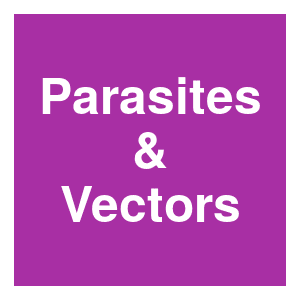
|
Aedes aegypti and Ae. albopictus microbiome/virome: new strategies for controlling arboviral transmission?M. Gómez, D. Martinez, M. Muñoz and J. D. Ramírez, Parasites and Vectors, 15:287. 2022.
Aedes aegypti and Aedes albopictus are the main vectors of highly pathogenic viruses for humans, such as dengue (DENV), chikungunya (CHIKV), and Zika (ZIKV), which cause febrile, hemorrhagic, and neurological diseases and remain a major threat to global public health. The high ... Keywords: Aedes, aegypti, albopictus, arboviru, dengue, genetic biocontrol, microbiome, virome |

|
Wolbachia wPip Blocks Zika Virus Transovarial Transmission in Aedes albopictusY. Guo, J. Guo, Y. Li, X. Zheng and Y. Wu, Microbiol Spectrum, e0263321. 2022.
Area-wide application of Wolbachia to suppress mosquito populations and their transmitted viruses has achieved success in multiple countries. However, the mass release of Wolbachia-infected male mosquitoes involves a potential risk of accidentally releasing fertile females. In ... Keywords: Aedes, aegypti, albopictus, arboviru, dengue, genetic biocontrol, microbiome, virome |

|
The AalNix3&4 isoform is required and sufficient to convert Aedes albopictus females into malesY. Zhao, B. Jin, P. Liu, X. Xiao, L. Cai, Z. Xie, L. Kong, T. Liu, W. Yang, Y. Wu, J. Gu, Z. Tu, A. A. James and X.-G. Chen, PLOS Genetics, 18:e1010280. 2022.
Author summary Nix serves as a conserved male-determining factor in the two most important mosquito arboviral vectors, Ae. aegypti and Ae. albopictus. AaeNix alone can convert Ae. aegypti females into fertile but flightless males. AalNix has four alternative splice isoforms ... Keywords: Aedes, aegypti, albopictus, arboviru, dengue, genetic biocontrol, microbiome, virome |

|
Establishment of Wolbachia infection in Aedes aegypti from Pakistan via embryonic microinjection and semi-field evaluation of general fitness of resultant mosquito populationM. S. Sarwar, N. Jahan, A. Ali, H. K. Yousaf and I. Munzoor, Parasites and Vectors, 15:191. 2022.
BACKGROUND: Dengue is a mosquito-borne viral disease that is mainly spread by Aedes aegypti. It is prevalent on five continents, predominantly in tropical and sub-tropical zones across the world. Wolbachia bacteria have been extensively used in vector control strategies ... Keywords: Aedes, aegypti, albopictus, arboviru, dengue, genetic biocontrol, microbiome, virome |

|
Combining two Genetic Sexing Strains allows sorting of non-transgenic males for Aedes genetic controlC. Lutrat, M. Burckbuchler, R. P. Olmo, R. Beugnon, A. Fontaine, T. Baldet, J. Bouyer and E. Marois, bioRxiv, 2022.03.11.483912. 2022.
Chemical control of the mosquito vectors Aedes albopictus and Aedes aegypti is costly, unsustainable, and increasingly ineffective due to the spread of insecticide resistance. The Sterile Insect Technique is an autocidal control tactic that represents a valuable alternative but ... Keywords: Aedes, aegypti, albopictus, arboviru, dengue, genetic biocontrol, microbiome, virome |

|
Quality Control Methods for Aedes albopictus Sterile Male TransportationG. D. Mastronikolos, A. Kapranas, G. K. Balatsos, C. Ioannou, D. P. Papachristos, P. G. Milonas, A. Puggioli, I. Pajović, D. Petrić, R. Bellini, A. Michaelakis and N. T. Papadopoulos, Insects, 2022.
Genetic based mosquito control methods have been gaining ground in recent years for their potential to achieve effective suppression or replacement of vector populations without hampering environments or causing any public health risk. These methods require the mass rearing of ... Keywords: Aedes, aegypti, albopictus, arboviru, dengue, genetic biocontrol, microbiome, virome |

|
Could Sterile Aedes albopictus Male Releases Interfere with Aedes aegypti Population in Reunion Island?H. F. Andrianjakarivony, D. Damiens, L. Marquereau, B. Gaudillat, N. Habchi-Hanriot and L.-C. Gouagna, Insects, 13. 2022.
In Reunion Island, the feasibility of an Aedes albopictus control program using the Sterile Insect Technique (SIT) is studied. Because, in some regions, Ae. albopictus is living in sympatry with Aedes aegypti, the impact of releasing millions of sterile male Ae. albopictus on ... Keywords: Aedes, aegypti, albopictus, arboviru, dengue, genetic biocontrol, microbiome, virome |

|
The drone, the tool of the future to combat its spreadT. Thompson, Your Decommissioning News, 2021.
Drones could become a promising tool in the fight against the tiger mosquito, according to a study published Tuesday by French researchers. French researchers said on Tuesday that drones could, within a few years, integrate into the arsenal of the fight against the tiger ... Keywords: Aedes, aegypti, albopictus, arboviru, dengue, genetic biocontrol, microbiome, virome |

|
Prevalence and molecular characterization of Wolbachia in field-collected Aedes albopictus, Anopheles sinensis, Armigeres subalbatus, Culex pipiens and Cx. tritaeniorhynchus in ChinaY. Yang, Y. He, G. Zhu, J. Zhang, Z. Gong, S. Huang, G. Lu, Y. Peng, Y. Meng, X. Hao, C. Wang, J. Sun and S. Shang, PLOS Neglected Tropical Diseases, 15:e0009911. 2021.
Wolbachia are maternally transmitted intracellular bacteria that can naturally and artificially infect arthropods and nematodes. Recently, they were applied to control the spread of mosquito-borne pathogens by causing cytoplasmic incompatibility (CI) between germ cells of females ... Keywords: Aedes, aegypti, albopictus, arboviru, dengue, genetic biocontrol, microbiome, virome |

|
Wolbachia goes to work in the war on mosquitoesS. Ong, Nature, 598:S32-s34. 2021.
There are two approaches to tackling dengue with Wolbachia. The first involves releasing only modified male mosquitoes. Since 2015, this strategy has been successfully adopted in Singapore and Guangzhou, China, and in parts of the United States, such as Miami, Texas and ... Keywords: Aedes, aegypti, albopictus, arboviru, dengue, genetic biocontrol, microbiome, virome |

|
Trial suppresses mosquitoes using non-GMO approachGM Watch, GM Watch, 2021.
In a first for the Southern Hemisphere, researchers have shown that a bacterium can successfully suppress populations of the invasive, disease-carrying Aedes aegypti mosquito that is responsible for spreading dengue, yellow fever and Zika. Published in PNAS (see abstract below), ... Keywords: Aedes, aegypti, albopictus, arboviru, dengue, genetic biocontrol, microbiome, virome |

|
Invasive, disease-carrying Aedes aegypti mosquito sterilized with bacteria and eradicated in large-scale trialCSIRO, Phys Org, 2021.
In a first for the Southern Hemisphere, researchers have shown a bacteria can successfully sterilize and eradicate the invasive, disease carrying Aedes aegypti mosquito which is responsible for spreading dengue, yellow fever and Zika. The breakthrough could support the ... Keywords: Aedes, aegypti, albopictus, arboviru, dengue, genetic biocontrol, microbiome, virome |

|
Releasing incompatible males drives strong suppression across populations of wild and Wolbachiat-carrying Aedes aegypti in AustraliaN. W. Beebe, D. Pagendam, B. J. Trewin, A. Boomer, M. Bradford, A. Ford, C. Liddington, A. Bondarenco, P. J. De Barro, J. Gilchrist, C. Paton, K. M. Staunton, B. Johnson, A. J. Maynard, G. J. Devine, L. E. Hugo, G. Rasic, H. Cook, P. Massaro, N. Snoad, J., Proceedings of the National Academy of Sciences, 118:e2106828118. 2021.
Through replicated treatment and control experiments in northern Australia, regular releases of Aedes aegypti males infected with a Wolbachia from Aedes albopictus was shown to drive strong population suppression in mosaic populations of wild-type (no Wolbachia) and ... Keywords: Aedes, aegypti, albopictus, arboviru, dengue, genetic biocontrol, microbiome, virome |

|
Two newly introduced Wolbachia endosymbionts induce cell host differences in competitiveness and metabolic responsesT. P. Li, S. S. Zha, C. Y. Zhou, X. Xia, A. A. Hoffmann and X. Y. Hong, Appl Environ Microbiol, Aem0147921. 2021.
Wolbachia endosymbionts can induce multiple reproductive manipulations in their hosts, with cytoplasmic incompatibility (CI) being one of the most common manipulations. The important agricultural pests, white-backed planthopper (Sogatella furcifera) and brown planthopper ... Keywords: Aedes, aegypti, albopictus, arboviru, dengue, genetic biocontrol, microbiome, virome |

|
Millions of Lab-Grown Mosquitoes Are Being Released in GuangzhouF. Yiying, Sixth Tone, 2021.
Guangzhou is releasing millions of lab-engineered mosquitoes every day to neuter and prevent preexisting mosquitoes in the environment from spreading vector-borne diseases, local television station reported Saturday.The Guangzhou Wolbaki Biotech Co., Ltd., in partnership with the ... Keywords: Aedes, aegypti, albopictus, arboviru, dengue, genetic biocontrol, microbiome, virome |

|
Transgenic expression of Nix converts genetic females into males and allows automated sex sorting in Aedes albopictusC. Lutrat, R. P. Olmo, T. Baldet, J. Bouyer and E. Marois, bioRxiv, 2021.07.28.454191. 2021.
Aedes albopictus is a major vector of arboviruses. Better understanding of its sex determination is crucial for developing mosquito control tools, especially genetic sexing strains. In Aedes aegypti, Nix is the primary gene responsible for masculinization and Nix-expressing ... Keywords: Aedes, aegypti, albopictus, arboviru, dengue, genetic biocontrol, microbiome, virome |

|
Dengue fever: Upstaged but not outmatched by COVID-19C. E. Baclig, INQUIRER.NET, 2021.
Science has made gains in the war on dengue and other diseases that mosquitoes carry, like malaria.One of these is the World Mosquito Program (WMP), a non-profit initiative that aims to protect the global community from mosquito-borne viral diseases, by deploying a natural ... Keywords: Aedes, aegypti, albopictus, arboviru, dengue, genetic biocontrol, microbiome, virome |
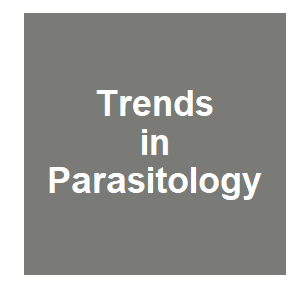
|
Improving mosquito control strategies with population genomicsT. L. Schmidt, N. M. Endersby-Harshman and A. A. Hoffmann, Trends in Parasitology, 37:907-921. 2021.
Mosquito control strategies increasingly apply knowledge from population genomics research. This review highlights recent applications to three research domains: mosquito invasions, insecticide resistance evolution, and rear and release programs. Current research trends follow ... Keywords: Aedes, aegypti, albopictus, arboviru, dengue, genetic biocontrol, microbiome, virome |

|
Knowledge, Attitude, and Practices Survey in Greece before the Implementation of Sterile Insect Technique against Aedes albopictusA. Stefopoulou, S. L. LaDeau, N. Syrigou, G. Balatsos, V. Karras, I. Lytra, E. Boukouvala, D. P. Papachristos, P. G. Milonas, A. Kapranas, P. Vahamidis and A. Michaelakis, Insects, 12. 2021.
A KAP tool was used to shed light on the knowledge, practices, and attitudes of local community members in order to better prepare and motivate participation in household mosquito control and to assess current understanding of SIT. Each household also received specific ... Keywords: Aedes, aegypti, albopictus, arboviru, dengue, genetic biocontrol, microbiome, virome |

|
Sterile Insect Technique (SIT) against Aedes Species Mosquitoes: A Roadmap and Good Practice Framework for Designing, Implementing and Evaluating Pilot Field TrialsC. F. Oliva, M. Q. Benedict, C. M. Collins, T. Baldet, R. Bellini, H. Bossin, J. Bouyer, V. Corbel, L. Facchinelli, F. Fouque, M. Geier, A. Michaelakis, D. Roiz, F. Simard, C. Tur and L.-C. Gouagna, Insects, 12. 2021.
We offer here a pragmatic and accessible ‘roadmap’ for the pre-pilot and pilot phases to guide any interested party. This will support stakeholders, non-specialist scientists, implementers, and decision-makers. Applying these concepts will ensure, given adequate resources, a ... Keywords: Aedes, aegypti, albopictus, arboviru, dengue, genetic biocontrol, microbiome, virome |

|
Reply to: Issues with combining incompatible and sterile insect techniquesY. Li, L. A. Baton, D. Zhang, J. Bouyer, A. G. Parker, A. A. Hoffmann, L. C. Ng, C. H. Tan and Z. Xi, Nature, 590:E3-E5. 2021.
When the aim is elimination of the target population, Uni-CI and Bi-CI do not have appreciably different risks of population replacement. The small-scale field trial8 cited by Moretti and Calvitti in their Comment1 does not provide evidence that Bi-CI protects against population ... Keywords: Aedes, aegypti, albopictus, arboviru, dengue, genetic biocontrol, microbiome, virome |

|
Issues with combining incompatible and sterile insect techniquesR. Moretti and M. Calvitti, Nature, 590:E1-E2. 2021.
In a recent paper, Zheng at al.1 performed field experiments that tested a strategy of mosquito suppression based on the release of functionally sterile males produced by the combination of reproductive unidirectional cytoplasmic incompatibility (which is induced by the bacterium ... Keywords: Aedes, aegypti, albopictus, arboviru, dengue, genetic biocontrol, microbiome, virome |

|
Mosquitoes genetically modified to be resistant to ZikaStaff, Lab+Life Scientist, 2021.
Researchers have wrestled with different strategies for controlling the spread of Zika virus, which is transmitted to humans from female mosquito bites. One approach, which has been approved by the US Environmental Protection Agency, will see more than 750 million genetically ... Keywords: Aedes, aegypti, albopictus, arboviru, dengue, genetic biocontrol, microbiome, virome |

|
Sexual Competitiveness and Induced Egg Sterility by Aedes aegypti and Aedes albopictus Gamma-Irradiated Males: A Laboratory and Field Study in MexicoJ. G. Bond, S. Aguirre-Ibáñez, A. R. Osorio, C. F. Marina, Y. Gómez-Simuta, R. Tamayo-Escobar, A. Dor, P. Liedo, D. O. Carvalho and T. Williams, Insects, 12. 2021.
The sterile insect technique may prove useful for the suppression of mosquito vectors of medical importance in regions where arboviruses pose a serious public health threat. In the present study, we examined the effects of sterilizing irradiation doses across different ratios of ... Keywords: Aedes, aegypti, albopictus, arboviru, dengue, genetic biocontrol, microbiome, virome |

|
Genetically-modified mosquitoes key to stopping Zika virus spreadUniversity of Missouri, Medical Xpress, 2021.
Alexander Franz, an associate professor in the MU College of Veterinary Medicine, collaborated with researchers at Colorado State University by using CRISPR gene-editing technology to produce mosquitoes that are unable to replicate Zika virus and therefore cannot infect a human ... Keywords: Aedes, aegypti, albopictus, arboviru, dengue, genetic biocontrol, microbiome, virome |

|
Population Dynamics of Aedes aegypti and Aedes albopictus in Two Rural Villages in Southern Mexico: Baseline Data for an Evaluation of the Sterile Insect TechniqueC. F. Marina, J. G. Bond, K. Hernández-Arriaga, J. Valle, A. Ulloa, I. Fernández-Salas, D. O. Carvalho, K. Bourtzis, A. Dor, T. Williams and P. Liedo, Insects, 12. 2021.
Indoor and outdoor ovitraps were placed in 15 randomly selected houses in two rural villages in Chiapas, southern Mexico. In addition, ovitraps were placed in five transects surrounding each village, with three traps per transect, one at the edge, one at 50 m, and another at 100 ... Keywords: Aedes, aegypti, albopictus, arboviru, dengue, genetic biocontrol, microbiome, virome |

|
Strategic Approach, Advances, and Challenges in the Development and Application of the SIT for Area-Wide Control of Aedes albopictus Mosquitoes in Reunion IslandL. C. Gouagna, D. Damiens, C. F. Oliva, S. Boyer, G. Le Goff, C. Brengues, J.-S. Dehecq, J. Raude, F. Simard and D. Fontenille, Insects, 11:770. 2020.
Keywords: Aedes, aegypti, albopictus, arboviru, dengue, genetic biocontrol, microbiome, virome |

|
Assessment of a Novel Adult Mass-Rearing Cage for Aedes albopictus (Skuse) and Anopheles arabiensis (Patton).H. Maïga, W. Mamai, N. S. Bimbilé Somda, T. Wallner, B. S. Poda, G. Salvador-Herranz, R. Argiles-Herrero, H. Yamada and J. Bouyer, Insects, 11:801. 2020.
Successful implementation of the sterile insect technique (SIT) against Aedes albopictus and Anopheles arabiensis relies on a continuous supply of sterile males. To meet this requirement, optimization of the mass-rearing techniques is needed. This study, therefore, aims to assess ... Keywords: Aedes, aegypti, albopictus, arboviru, dengue, genetic biocontrol, microbiome, virome |

|
On Nonlinear Pest/Vector Control via the Sterile Insect Technique: Impact of Residual FertilityM. S. Aronna and Y. Dumont, Bulletin of Mathematical Biology, 82:29. 2020.
We consider a minimalist model for the Sterile Insect Technique (SIT), assuming that residual fertility can occur in the sterile male population. Keywords: Aedes, aegypti, albopictus, arboviru, dengue, genetic biocontrol, microbiome, virome |

|
Incompatible and sterile insect techniques combined eliminate mosquitoesX. Zheng, D. Zhang, Y. Li, C. Yang, Y. Wu, X. Liang, Y. Liang, X. Pan, L. Hu, Q. Sun, X. Wang, Y. Wei, J. Zhu, W. Qian, Z. Yan, A. G. Parker, J. R. L. Gilles, K. Bourtzis, J. Bouyer, M. Tang, B. Zheng, J. Yu, J. Liu, J. Zhuang, Z. Hu, M. Zhang, J.-T. Gon, 572, 56-61. 2019.
Here we show that combining incompatible and sterile insect techniques (IIT–SIT) enables near elimination of field populations of the world’s most invasive mosquito species, Aedes albopictus. Millions of factory-reared adult males with an artificial triple-Wolbachia infection ... Keywords: Aedes, aegypti, albopictus, arboviru, dengue, genetic biocontrol, microbiome, virome |
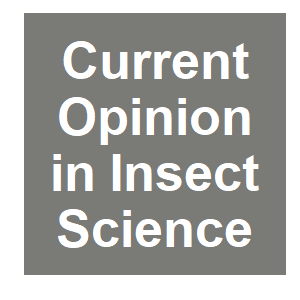
|
Back to the future: the sterile insect technique against mosquito disease vectorsR. S. Lees, J. R. L. Gilles, J. Hendrichs, M. J. B. Vreysen and K. Bourtzis, Current Opinion in Insect Science, 10:156-162. 2015.
With the global burden of mosquito-borne diseases increasing, and some conventional vector control tools losing effectiveness, the sterile insect technique (SIT) is a potential new tool in the arsenal. Equipment and protocols have been developed and validated for efficient ... Keywords: Aedes, aegypti, albopictus, arboviru, dengue, genetic biocontrol, microbiome, virome |

Contact
David O’Brochta
Foundation for the
National Institutes of Health
geneconvenevi@fnih.org
RSS

